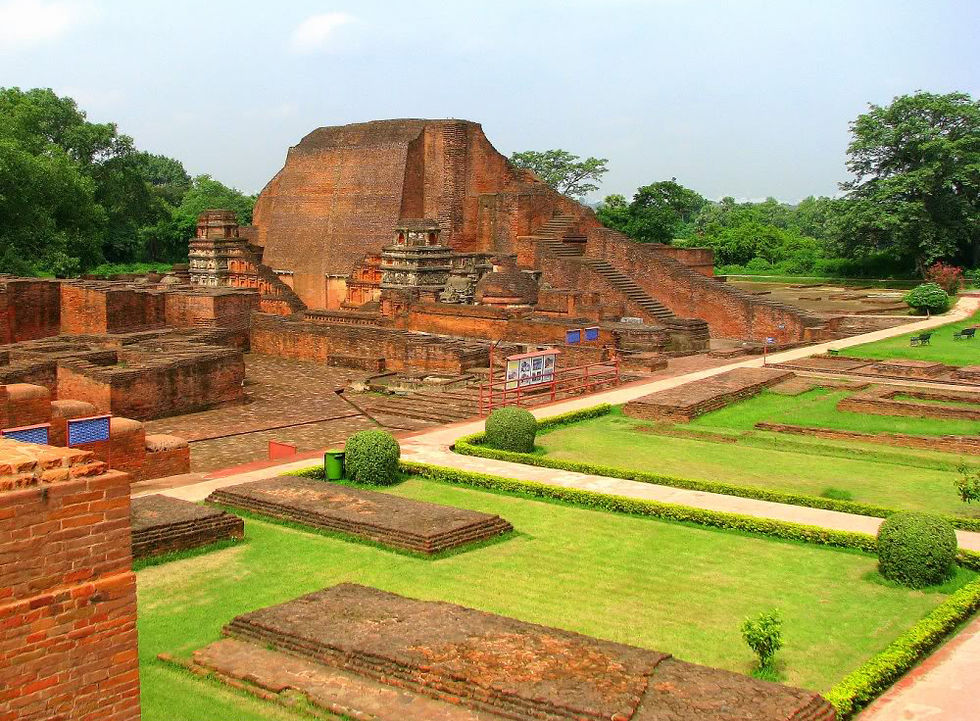Nalanda University: A UNESCO World Heritage Gem
- getsholidaysmci
- May 30
- 3 min read

Nalanda University: A Timeless Jewel in India’s Cultural Heritage
India, a land of ancient wisdom and diverse traditions, is home to some of the most iconic UNESCO World Heritage Sites. Among these, the majestic ruins of Nalanda University stand as a testament to India’s glorious past and enduring spirit of learning. Recognized by UNESCO as one of the prestigious World Heritage Sites in India, Nalanda is not just an archaeological wonder — it is a symbol of the cultural heritage of India and its intellectual legacy.
A Center of Ancient Knowledge
The story of Nalanda University ancient begins in the 5th century CE, during the Gupta dynasty. It was one of the world’s first residential universities, attracting scholars, monks, and students from across Asia. With thousands of manuscripts, classrooms, meditation halls, libraries, and dormitories, Nalanda was a hub of knowledge on subjects ranging from mathematics and astronomy to philosophy and medicine.
The university epitomized the richness of Indian heritage and culture. It had over 10,000 students and 2,000 teachers, and its influence reached far beyond the borders of India, contributing significantly to the intellectual exchange between India, China, Korea, Japan, and Tibet.
Who Built Nalanda University?
Nalanda University was initially supported and expanded by several Indian rulers over the centuries. Emperor Kumaragupta I of the Gupta dynasty is credited as the one who built Nalanda University, though later patrons like Harshavardhana and the Pala kings also contributed significantly to its growth. The strong royal backing ensured Nalanda’s reputation as a premier global center of learning remained unchallenged for centuries.
Who Burnt and Destroyed Nalanda University?
Despite its brilliance, Nalanda’s light was tragically extinguished in the 12th century. The question of who destroyed Nalanda University is often met with historical consensus: it was destroyed by Bakhtiyar Khilji, a Turkic military general of the Delhi Sultanate. His army set the university ablaze, burning the vast libraries for months. The loss was catastrophic — not just for India but for the world’s intellectual history.
Thus, who burnt Nalanda University is closely linked with one of the darkest chapters in the decline of classical Indian knowledge systems.
Ruins of Nalanda University: A Living Legacy
Today, the ruins of Nalanda University in Bihar echo with the whispers of its scholarly past. The site includes monasteries, temples, and staircases made of red bricks that have withstood the test of time. Visitors can still explore the structural remains, getting a glimpse into the architectural brilliance and academic atmosphere that once flourished here.
In 2016, UNESCO rightfully recognized Nalanda as part of the global World Heritage India list. Being included among the UNESCO Heritage Sites underscores its significance not just to India, but to the world’s collective cultural heritage.
Nalanda’s Recognition as a UNESCO World Heritage Site
As one of the most revered World Heritage Sites in India, Nalanda’s inclusion in UNESCO’s list marks a proud moment in India’s journey to preserve and promote its rich past. The recognition honors not only the physical structures but also the intangible cultural values, philosophies, and educational traditions that Nalanda stood for.
Preserving the Heritage of India
Nalanda’s recognition as a UNESCO World Heritage Site reinforces the need to protect and promote the heritage of India. It serves as a reminder of the intellectual depth and cultural sophistication that defined ancient Indian civilization. Institutions like Nalanda exemplify the spirit of inquiry, tolerance, and dialogue — values that are more relevant today than ever.
India continues to be a custodian of profound traditions, and sites like Nalanda bridge the past with the present, inspiring future generations to honor their roots.
Conclusion
The tale of Nalanda University is more than a historical account — it’s a celebration of India’s role as a beacon of knowledge. From its rise as a global educational hub to its tragic destruction and eventual recognition as a World Heritage Site, Nalanda symbolizes the resilience of Indian heritage and culture.
As travelers walk through the ruins of Nalanda University, they don’t just see brick walls — they feel the heartbeat of a civilization that cherished wisdom above all. In preserving Nalanda, we preserve a part of humanity’s shared cultural heritage.


Comments